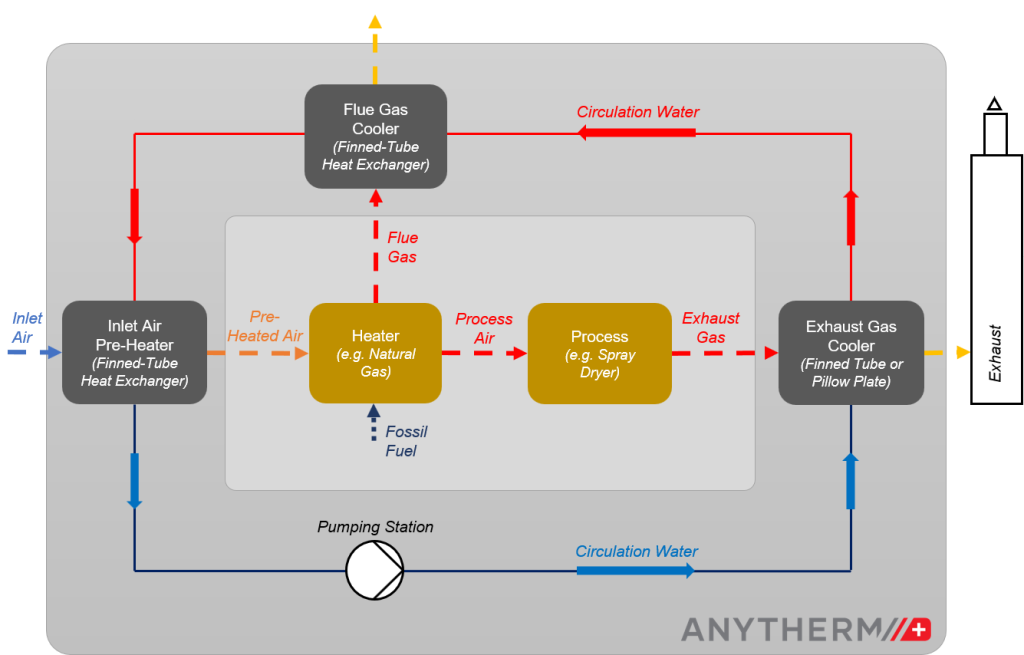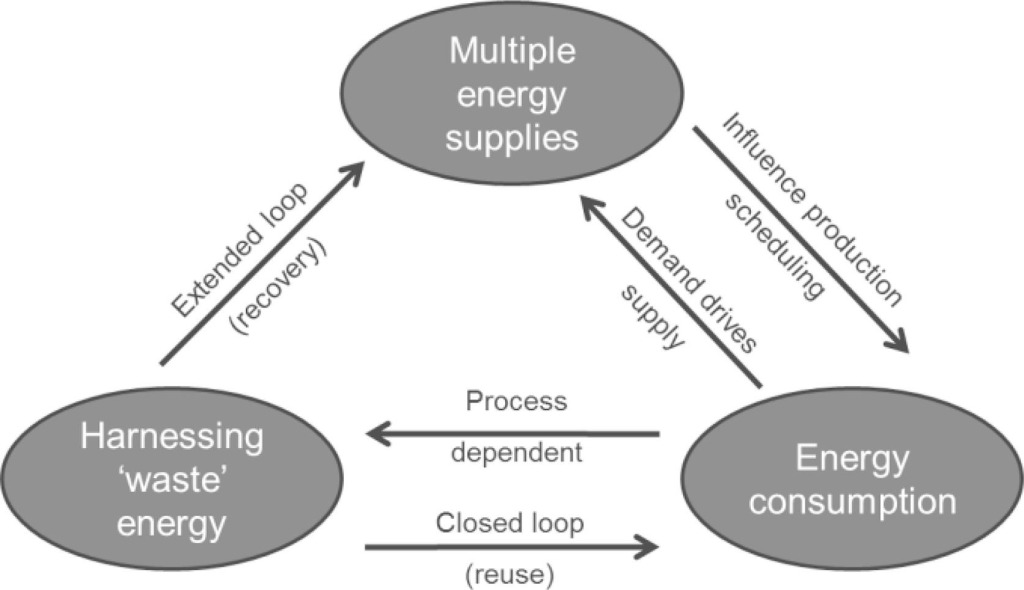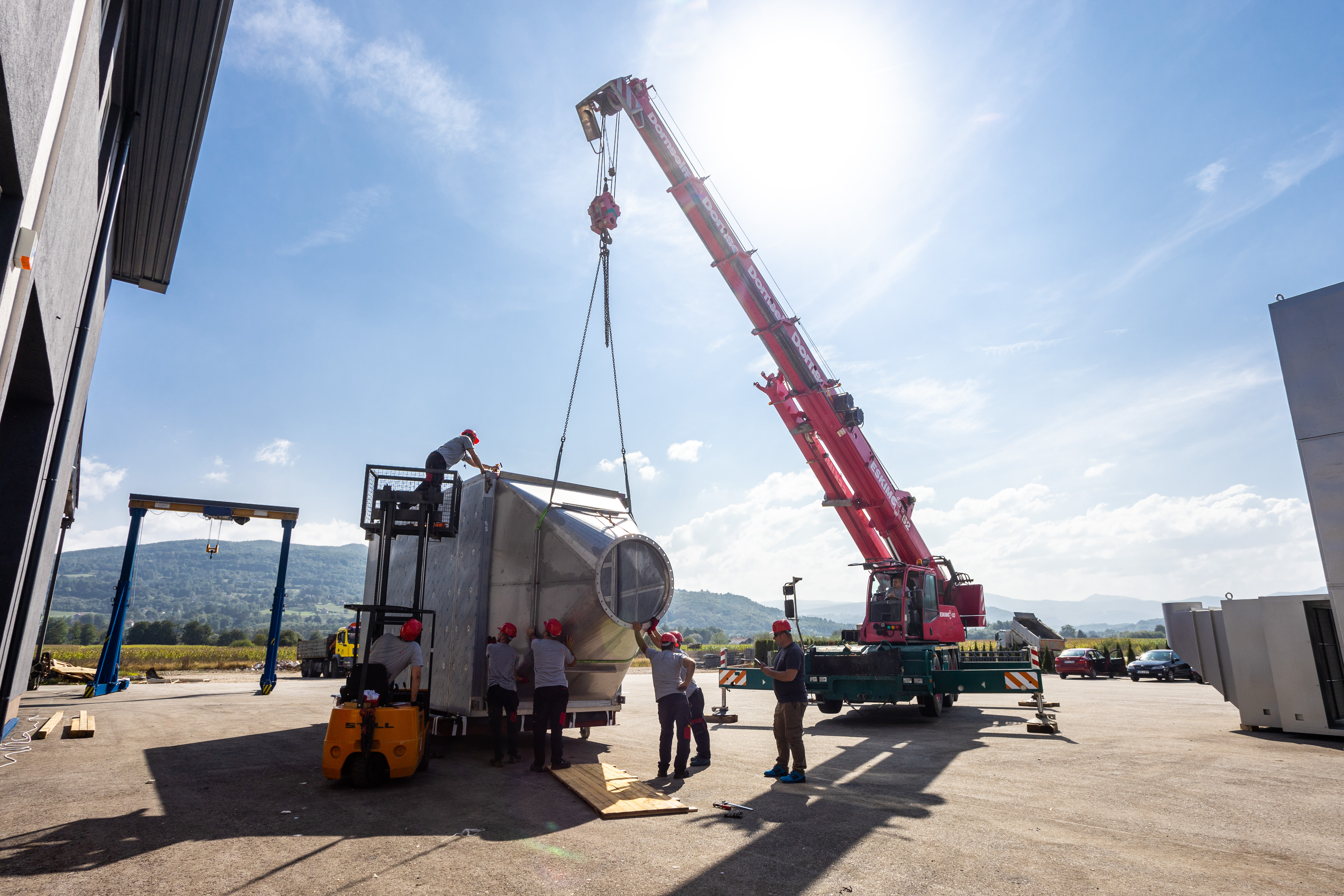A step towards sustainability
Why is industrial heat recovery so important?
Have you ever considered that in addition to producing goods, manufacturers also produce enormous amounts of waste heat? Industrial processes frequently waste vital energy, similar to how a cold atmosphere causes a coffee to lose steam. But what if we could save and repurpose this „steam“?
Industrial heat recovery systems do precisely that. Like a sponge that soaks up spilt water and then releases it when pressed, they take the „lost“ heat and transform it into useful energy.
How does it all work?

Think about preparing a cup of hot tea. The unused energy is what you can feel as rising heat. Heat recovery distributes the heat from one cup to another by acting as a filter. Heat is frequently produced in industrial buildings using expensive energy sources, such as combustion. We trap this heat instead of letting it just go into the atmosphere and utilize it to heat buildings or power other activities.
There are two main types of heat recovery systems:
- Recirculating heat recovery systems: At different points on a site, heat is recovered and discharged.
- Direct recovery systems: This technique combines heat release and recuperation into one unit.
A practical illustration is a recirculating heat recovery system’s application in spray drying procedures. Here, the incoming air is preheated using heat that is recovered from the combustion operations‘ flue gas and exhaust air.

Attribution 4.0 International (CC BY 4.0)
Advantages of industrial heat recovery
- Less energy consumption: Having lower gas and electricity costs. Excellent, no? The amount of energy used by businesses can be significantly reduced by recycling heat.
- Reducing harmful emissions: Hazardous industrial waste includes certain gasses. We may reuse them as opposed to simply discarding them, which prevents the discharge of dangerous gasses into the environment.
- Selling carbon credits: A win-win circumstance! In addition to lowering their CO₂ emissions, businesses can sell carbon credits to generate additional revenue.
- Government support: Who wouldn’t want to be supported financially? Many governments support these environmentally friendly technologies by offering grants or tax breaks.
Enhancing System Longevity
Industrial heat recovery systems, when properly maintained, not only provide immediate energy savings but also extend the lifespan of equipment. By reducing the strain on machines and ensuring they operate within optimal temperature ranges, wear and tear are minimized. This translates to:
- Lower maintenance costs.
- Reduced downtimes.
- Extended equipment lifespan.
A more sustainable approach and CO₂ reduction
Two of the most important challenges of our day are climate change and increased energy use. The industrial sector accounts for one third of global energy use, of which up to fifty percent is eventually wasted as heat. We can minimize our energy bills and lower our carbon footprint by reusing heat. By doing this, we are influencing the future in a way that is more resource- and sustainably-wise.
The Global Perspective
As countries rally towards the Paris Agreement’s goals, industrial heat recovery is gaining prominence in national energy strategies. It’s not just about individual businesses benefitting; it’s about nations advancing towards a collective sustainable future. Countries that prioritize industrial heat recovery today are positioning themselves as tomorrow’s leaders in energy efficiency and environmental stewardship. Custom made heat exchange units can save up to 100% of CO2 emissions!
Emerging Trends in Heat Recovery
As technology evolves, so do industrial heat recovery systems. With the rise of Industry 4.0 and the digital transformation, industries are leveraging advanced analytics, IoT sensors, and machine learning to optimize heat recovery processes. These digital tools offer real-time monitoring, predictive maintenance, and efficient energy management, ensuring that heat recovery systems operate at their peak.

Heat EXCHANGER
HEAT RECOVERY
ENERGY EFFICIENCY
ANYTHERM MATTERS
FAQs
What is industrial heat recovery?
Industrial heat recovery refers to the process of capturing and reusing heat energy that would otherwise be lost during industrial operations. This „waste heat“ can come from various sources such as machinery, flue gases, and exhaust systems. By leveraging advanced heat recovery techniques, this previously lost energy can be repurposed for heating, cooling, or generating power, maximizing the efficiency of the industrial process.
How do companies benefit?
There are several advantages companies can reap. They cut their CO₂ emissions, save money on electricity, and sometimes even qualify for government incentives.
- Environmental Responsibility: By reusing heat, companies substantially reduce their CO₂ and other greenhouse gas emissions, contributing to a healthier environment.
- Financial Savings: Heat recovery systems can lead to significant reductions in energy bills. Instead of purchasing more energy, industries can reuse what they’ve already paid for.
- Enhanced Equipment Efficiency: Recovering and redistributing heat can improve the efficiency and lifespan of equipment, reducing maintenance and replacement costs.
- Government Incentives: Many governments recognize the environmental and economic value of heat recovery. As such, they may offer grants, tax deductions, or other incentives to companies that integrate these systems.
- Improved Production Capacity: By optimizing energy use, companies can potentially enhance their production rates without increasing energy consumption.
Is this technology suitable for all businesses?
Heat recovery isn’t one-size-fits-all. Its applicability largely hinges on the nature of the industrial processes in question and the energy consumption patterns associated with them. However, numerous industries have already benefited from integrating heat recovery systems:
Typical industries are:
- Food and Drinks: Whether it’s baking, brewing, or processing, heat is a key component in the food and beverage sector. By recycling this heat, companies can cook, boil, or pasteurize more efficiently.
- Oil Industry and petroleum refining processes: Refineries have numerous heat-intensive processes where significant amounts of energy can be recovered and repurposed for pre-heating, distillation, or other operations.
- Dairy Industry: From pasteurization to evaporation, the dairy industry involves several heating and cooling processes. Heat recovery can streamline these, saving energy and reducing costs.
- Chemical Industry: Heat is integral to various chemical reactions and distillation processes. Recycling this heat ensures that reactions occur at optimal temperatures without excess energy expenditure.
- Pharma Industry: The pharmaceutical sector often requires stringent temperature controls for drug synthesis, sterilization, and other processes. Efficient heat recovery systems ensure that these temperatures are maintained with minimal energy waste.
- Pulp/Paper Industry: The pulp and paper sector involves various heat-intensive stages like cooking, bleaching, and drying. By effectively capturing and redistributing this heat, mills can increase their throughput while keeping energy costs in check.
What about the return on investment for such systems?
Although the initial capital investment can be high, the long-term energy cost benefits frequently offset this. A pinch analysis can help to calculate the time it takes for a positive ROI. The energy requirements of industrial operations can be decreased by 10% to 40% using the suggested actions. The payback period typically lasts between one and four years.
Can these systems be retrofitted in older factories?
Yes, although the level of integration will vary depending on the plant. Always seek the advice of a professional for an examination.
In the industrial sector, heating and cooling processes frequently consume more than half of the energy. It is crucial to further examine these processes and optimize them in order to reduce their energy usage, CO₂ emissions, as well as their investment and maintenance costs. A Pinch study thoroughly investigates the entire system, including the production facility and energy source.
References and links:
Najafi, Gholamhassan & Bellos, Evangelos & Rajaee, Fatemeh & Said, Zafar & Mohamed, Ts. Dr. Mazlan. (2020). A review of industrial waste heat recovery system for power generation with Organic Rankine Cycle: Recent Challenges and Future Outlook. Journal of Cleaner Production. 287. 10.1016/j.jclepro.2020.125070.
Lygnerud, Kristina & Werner, Sven. (2018). Risk assessment of industrial excess heat recovery in district heating systems. Energy. 151. 10.1016/j.energy.2018.03.047.
Wang, Xutong & Zhang, Meng. (2021). The Thermal Economy of a Circulating Medium and Low Temperature Waste Heat Recovery System of Industrial Flue Gas. International Journal of Heat and Technology. 39. 1680-1688. 10.18280/ijht.390533.
Rastegarpour, Soroush & Mariotti, Andrea & Ferrarini, Luca & Aminyavari, Mehdi. (2023). Energy efficiency improvement for industrial boilers through a flue-gas condensing heat recovery system with nonlinear MPC approach. Applied Thermal Engineering. 229. 120554. 10.1016/j.applthermaleng.2023.120554.
Industrial waste heat recovery: A systematic approach
Waste not: Unlocking the potential of waste heat recovery
Read also:
